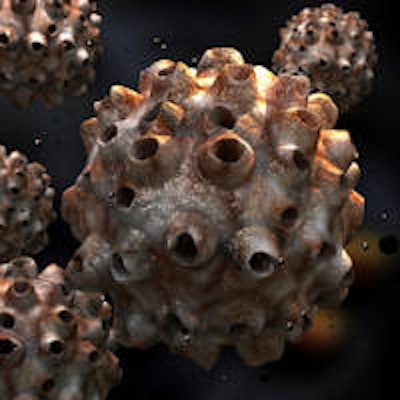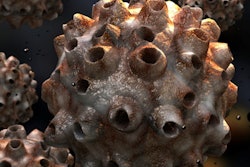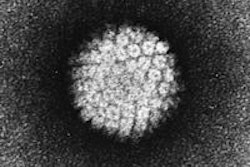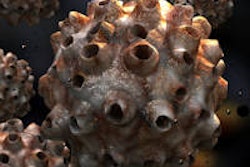
A free, federal nationwide human papillomavirus (HPV) vaccination program for adolescent boys and girls would save billions of dollars in medical costs and help prevent oropharyngeal cancers, according to a new policy brief by the Center for Oral Health (COH). Studies show that noncervical HPV-related diseases cost billions of dollars annually, and the number of HPV-related oropharyngeal cancer cases is predicted to exceed cervical cancers by 2020.
A recent Centers for Disease Control and Prevention (CDC) study also found that currently available HPV vaccines could prevent most oropharyngeal cancers in the U.S. (Emerging Infectious Diseases, May 2014, Vol. 20:5, pp. 822-828). The retrospective study of patients with oropharyngeal squamous cell carcinoma found that most were HPV-positive, especially for HPV types 16 and 18, and the majority of patients were white men.
Oral human papillomavirus (HPV) is a sexually transmitted infection affecting between 0.9% to 7.5% of U.S. adults, according to the brief. Studies show the prevalence of genital HPV ranges from 27% to 43% among U.S. females ages 14 to 59 years.
Studies about U.S. costs of noncervical HPV related diseases range from $160 million to as much as $5 billion annually, the brief authors noted. And by 2020, HPV-related oropharyngeal cancers will have a higher incidence than cervical cancers (American Journal of Obstetrics & Gynecology, May 2008, Vol. 198:5, pp. 500.e1-500.e7).
HPV is causally linked to multiple cancers, including cervical and oropharyngeal cancers. The CDC reports that about 26,000 Americans are affected by HPV-related cancers annually.
A few specific strains of HPV are present in more than 70% of oropharyngeal cancers, studies show. HPV vaccination programs have demonstrated improvement in the rate of cervical cancer, which suggests that such programs may be an effective prevention strategy to decrease the morbidity and mortality of HPV-related oropharyngeal cancers, according to the COH researchers.
Current vaccination programs, HPV-related costs
Currently, 23 U.S. states and the District of Columbia have laws that require HPV vaccinations, provide funding to cover the costs of the vaccines, or support public education about HPV and the vaccine. But only the District of Columbia and Virginia require the vaccine for girls to enter the sixth grade; however, parents can opt out.
The federally financed Vaccines for Children Program pays for vaccines recommended by the U.S. Advisory Committee on Immunization Practices for children ages 18 and younger who are either Medicaid-eligible, uninsured, American Indian or Alaska Native, or underinsured.
Oral HPV infection
HPV is a DNA virus, and skin-to-skin sexual contact is the mode of transmission. Performing oral sex on the genitals and/or anus of an infected person is the usual route for spreading HPV into the oral cavity, according to the brief. Transmission from mother to newborn during delivery also is thought to be possible, while other risk factors for oral HPV include being male and tobacco use. In otherwise healthy patients, most people clear oral HPV infections within 12 to 24 months.
HPV oral lesions have a "wart-like" appearance, and a solitary oral wart is most often associated with a benign strain of HPV, the researchers wrote. Multiple oral warts indicate a more infectious and potentially higher-risk type of HPV infection. Oral biopsies are the gold standard to establish the final diagnosis and to rule out precancer and cancer. The most common oral cancer (more than 90 %) is squamous cell carcinoma.
Once oral cancer has been diagnosed, a more detailed medical workup is performed, and this is when the cancer can be checked for the presence of HPV. There has been a significant increase in HPV-positive oropharyngeal cancers, as reported in a U.S. cancer registry study that found a 225% increase in HPV-positive head and neck squamous cell carcinomas from 1988 to 2004 (Oral Oncology, May 2014, Vol. 50:5, pp. 364-369).
“We encourage policymakers and public health officials to deepen the understanding on how HPV vaccines may help eradicate HPV-related oropharyngeal cancers to ensure an effective and efficient national immunization program.”
HPV vaccinations
Vaccination against high-risk strains of HPV during the preteen years allows the body to develop an effective immune response and affords protection before the start of sexual activity. Since HPV vaccinations are efficacious in preventing cervical cancer and appear to afford strong protection against high-risk oral HPV strains, it is reasonable to assess the vaccine effectiveness in preventing HPV-related oropharyngeal cancers, the brief authors noted.
Vaccination against HPV strains 16 and 18 are currently available: Cervarix (GlaxoSmithKline) and Gardasil (Merck Sharp & Dohme). These vaccines protect against the development of cervical cancer. The vaccine is administered in a series of three doses over six months; because of the dosing schedule, finalizing the full vaccination course can be a challenge to complete, the authors noted.
The CDC recommends that all 11- or 12-year-old girls get the three doses and also that females between the ages of 13 through 26 years should get the HPV vaccine if they have not received any or all doses when they were younger. The CDC recommends the HPV vaccine for all boys age 11 or 12 years and for males ages 13 through 21 years who did not get any or all of the three recommended doses when they were younger. All men may receive the vaccine up to age 26.
Economic costs, benefits, and analysis
Preventive programs are deemed economically sound when the prevention program costs less than future costs associated with treatment and reduced life expectancy, the authors wrote. A hypothetical nationwide HPV vaccination program spanning 2015 to 2044 would cost about $4.94 billion to $7.56 billion.
The brief lists three long-term potential benefits of oropharyngeal cancer prevention:
- Family savings in medical treatments
- Reduced mortality
- Fewer work days lost
The researchers used the disability-adjusted life year (DALY) to measure the cost/benefit analysis of HPV vaccinations as the number of years lost because of ill health, disability, or early death.
For a national HPV vaccination program (with vaccine effectiveness of 60%), the researchers estimated that a minimum of six years of additional healthy life would be gained per each oropharyngeal cancer case. When vaccine effectiveness is reduced to 40%, a maximum of only three years of additional healthy life would be gained, they stated.
The researchers recommended the HPV vaccine for all children between the ages of 10 and 14, because studies have shown the vaccine is most effective before the start of sexual activity, and the vaccine does not clear infections acquired before vaccination.
Assuming a conservative estimation that only 50% of those DALYs reduced (or avoided) are workable years throughout those oropharyngeal cancer patients' lives, and assigning each workable year an average market monetary value equal to a per capita gross domestic product (valued at $51,500 in 2014), the long-term (30 years) economic benefit of the nationwide vaccination program would range from about $8.45 billion to $16.91 billion in the lower vaccine effectiveness percentage and from about $11.98 billion to $23.96 billion with the higher vaccine effectiveness percentage. Across all these possible alternative scenarios, the benefits gained would be greater than the higher vaccine cost estimate of $7.56 billion, providing a return of about $1.11 to $3.16 per dollar invested.
Conclusion
"Hypothetically, a universal, free federal nationwide mandatory program of HPV vaccination would be the best solution, but the impact in the national health budget would be costly," the researchers concluded. A second-best solution would be to focus the program to a priority group (preadolescents and adolescents who have not yet become sexually active): both male and female adolescents ages 10 to 14 years as a first step and then every next year (for at least the next 30 years) only vaccinate to cohort 10-year-old boys and girls, they wrote.
"Immunization prevents millions of deaths every year," the researchers wrote. "We encourage policymakers and public health officials to deepen the understanding on how HPV vaccines may help eradicate HPV-related oropharyngeal cancers to ensure an effective and efficient national immunization program."



















